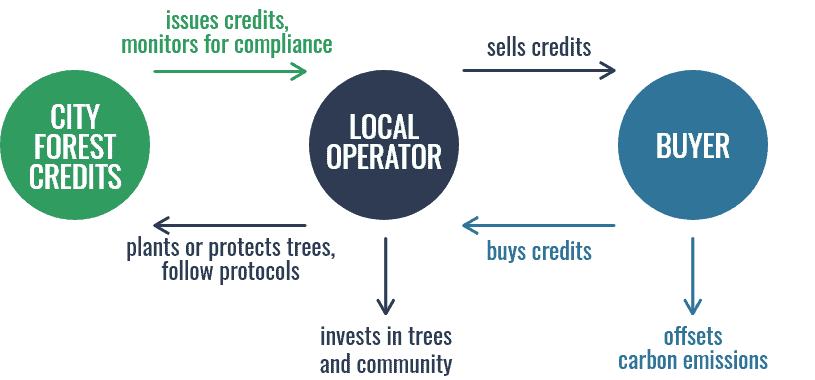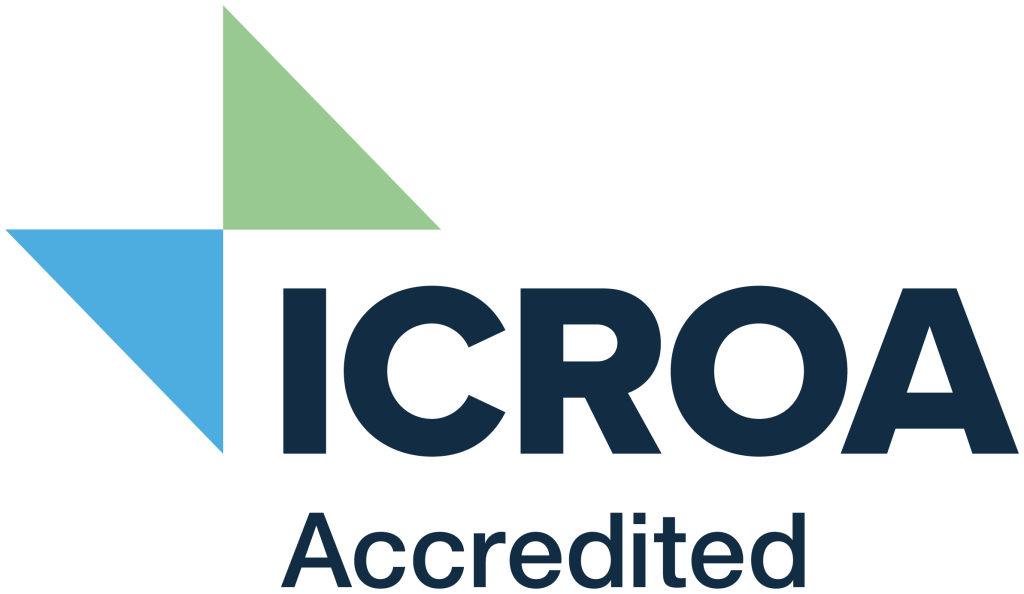We are a nonprofit carbon registry that issues third-party verified City Forest Carbon+ Credits from tree planting and preservation projects in cities. Companies can buy credits from local projects and invest where people live, work, and play.
City Forest Carbon+ Credits
Triple bottom line community impactWe ensure every investment is accountable for the long term. Our City Forest Carbon+ Credits™ store carbon, improve air quality, mitigate stormwater runoff, and reduce energy costs, while delivering social equity and human health impacts.
Trees are green infrastructure – similar to roads and other utilities that take care of us and make a city function. These functions can be measured. We include the project quantified values as metric tonnes of CO2(e) as well as resource units and avoided costs of co-benefits in each Carbon+ Credit.
Local to Global
High visibility projectsCompanies and municipalities are purchasing premium value carbon credits from projects across the country.
Buyers can address a global problem and offset their carbon emissions while giving back to communities. Carbon projects in cities are prominent, accessible, and allow direct engagement opportunities for customers, employees, and other stakeholders.
To solve climate change, we will have to learn how to feed the world virtually carbon-free. Our partnership with City Forest Credits and King County moves our company toward that goal, all while beautifying and protecting ecosystems in our community.
—Helena Park, CEOFishermen's Finest
Carbon Buyers and Funders
![$logo['alt']](https://www.cityforestcredits.org/wp-content/uploads/2020/09/city-of-austin-logo.png)
![$logo['alt']](https://www.cityforestcredits.org/wp-content/uploads/2020/09/bassetti-architects-logo.png)
![$logo['alt']](https://www.cityforestcredits.org/wp-content/uploads/2020/09/fishermens-finest-logo.png)
![$logo['alt']](https://www.cityforestcredits.org/wp-content/uploads/2021/09/paypal-logo-300x73.png)
How it Works
Simple, efficient, and reliableWe maintain integrity and quality for every project. Buyers can purchase verified City Forest Carbon+ Credits directly from local operators to offset their emissions and contribute to more trees for communities.

The purchase price and negotiation process is conducted between buyer and local operator. City Forest Carbon+ Credits™ are like rare earth minerals, lower general volume and extremely valuable. Buyers choose to purchase these credits because of their special contributions to society, the environment, and urban spaces.
The City of Austin has wanted locally sourced carbon credits for many years. Now, with the work of City Forest Credits, it can get them. The credits are lower in volume and higher in price, but they deliver so much more than CO2 storage. Our carbon dollars and the many benefits can finally stay here with local residents.
—Zach Baumer, Climate Program ManagerCity of Austin
Behind our Protocols
Cross-sector collaborationWe worked with leading scientists and a national drafting group to develop carbon protocols for metropolitan areas. These urban forest and climate professionals represent diverse specialties and regions across the country.
Explore Carbon Projects
Pierce County, WA
Pierce Conservation District Reforestation Program – 2020
Restoring healthy riparian corridors
Shoreline, WA
Ballinger Open Space Restoration
Restoring a community park
Elizabeth Township, PA
Buena Vista Heights Conservation Area
Protecting woodlands and drinking water
King County, WA
King County Urban Forest Preservation Project
Protecting critical remaining forestland
Des Moines, IA
Reforesting Des Moines – 2019
Workforce development training
Carbon Credit FAQs
Carbon+ Credits™ are premium credits. City Forest Credits does not sell credits. Local entities leading carbon projects have sold credits for $22 to 45/ton.
CFC is a registry dedicated only to urban forestry. A carbon registry is a non-profit organization that administers protocols, rules, quantification methods, third-party verification standards, and issues and tracks carbon credits.
There are three large carbon registries that each handle dozens of other carbon project types, from gas plants to landfills to forest projects – Verra, American Carbon Registry, and the Climate Action Reserve.
The State of California developed an urban forest carbon protocol in 2011, and the Climate Action Reserve developed a second urban forest protocol in 2013-2014. But neither of those protocols resulted in any applications for projects. CFC and its many urban forest stakeholders nationally began their work in 2015 to create much-needed carbon credits for the public resource that is our urban forests.
CFC registers two types of projects – tree planting and forest preservation within metropolitan areas. A project must be within an “urban area” as defined and mapped by the U.S. Census Bureau. Projects can also be within the boundary of incorporated or unincorporated cities or towns, on certain watershed lands and transportation, power transmission, and utility right of ways.
Preservation projects protect forested stands from development and deforestation in order to allow it to continue sequestering carbon. These projects last from 40 to 100 years.
Planting projects involve planting trees to sequester carbon. These projects require a 26-year commitment and can include single trees planted 16.5 feet or more apart from each other or canopy style plantings in which saplings are planted in high densities to generate a forested stand.
Non-profit organizations or local government agencies can lead a carbon project. For planting, we recommend you plant 2,000 trees or more per year. For preservation we recommend you protect 15 acres or more per year. See our carbon protocol page for more information about eligibility, requirements, templates, and fees.







